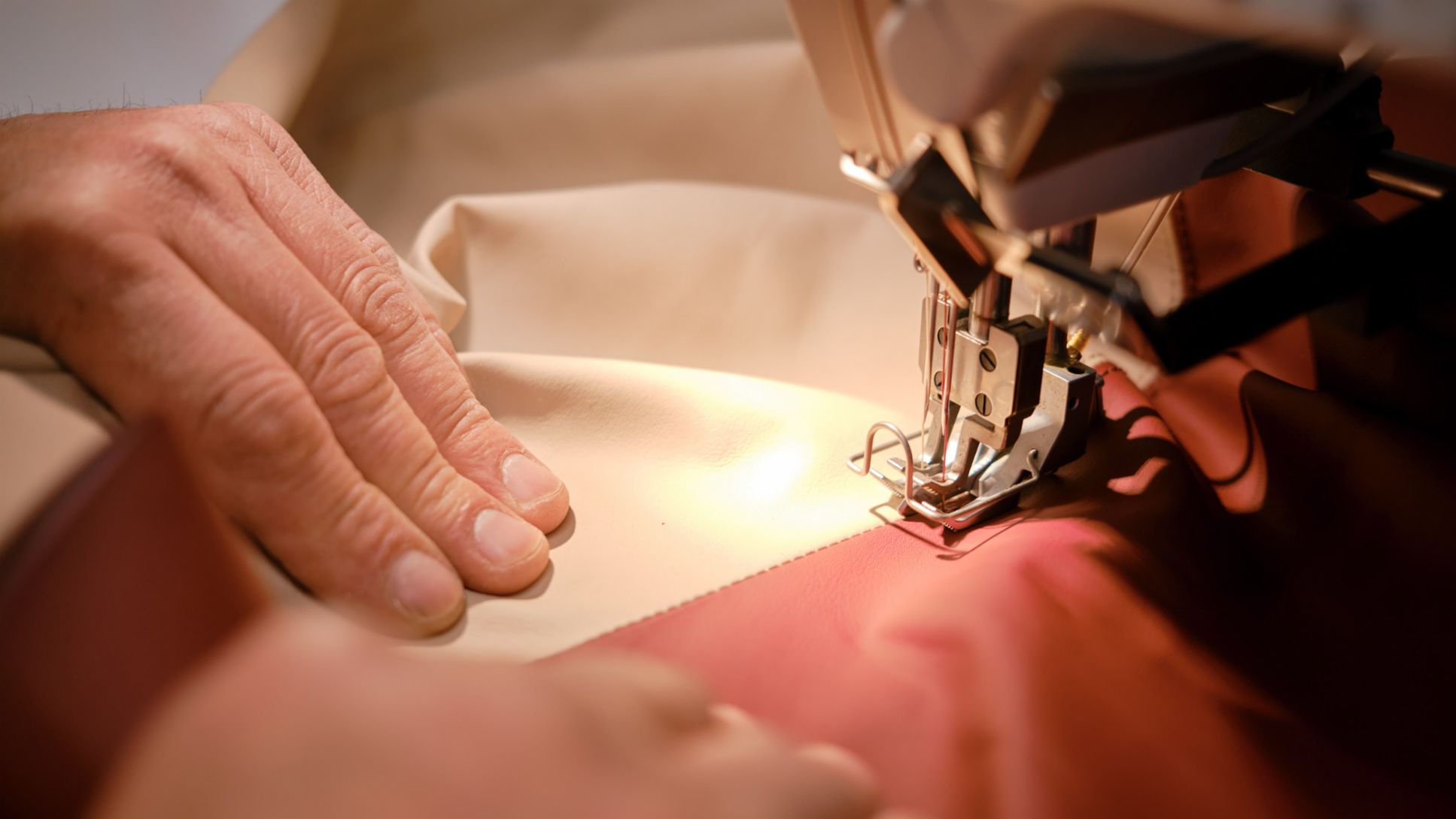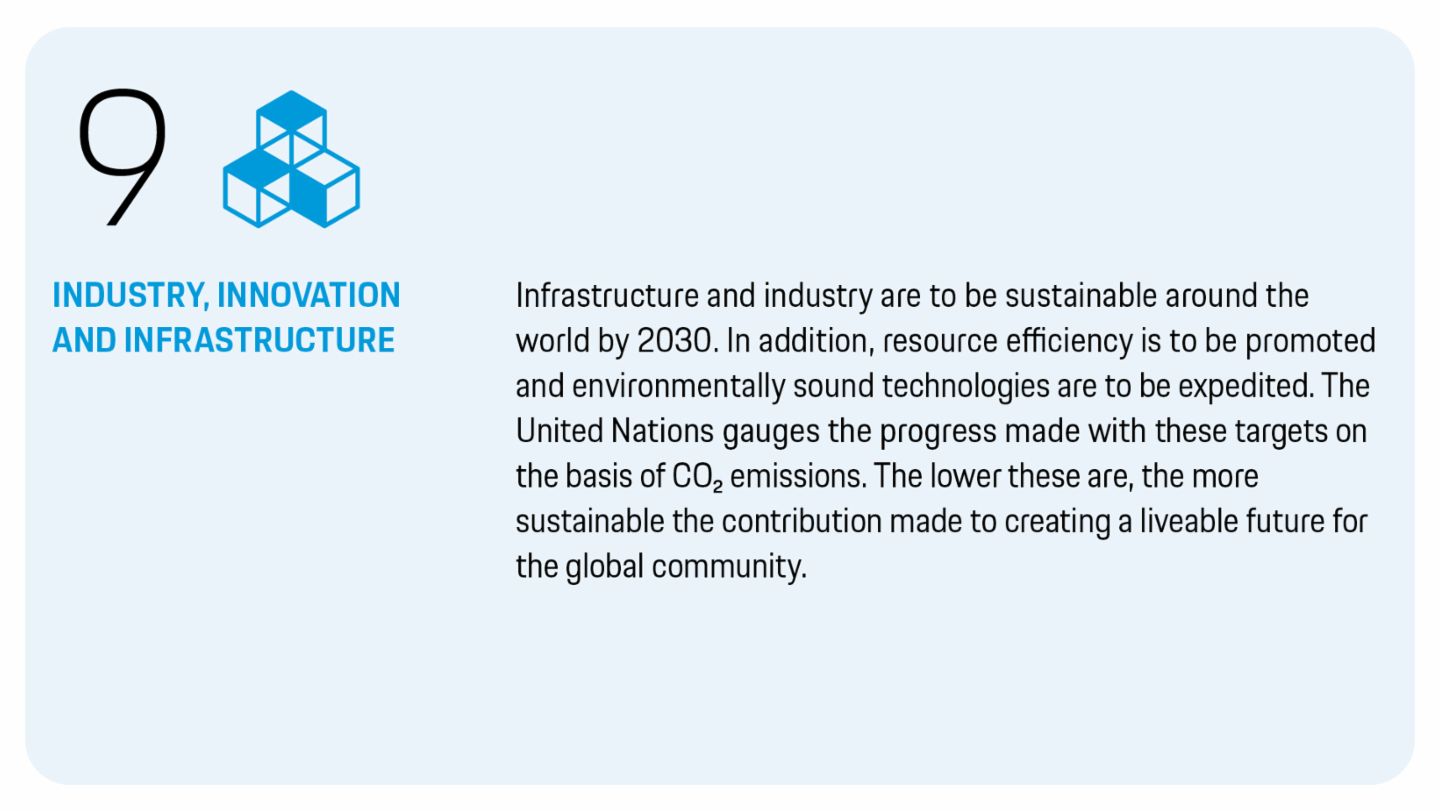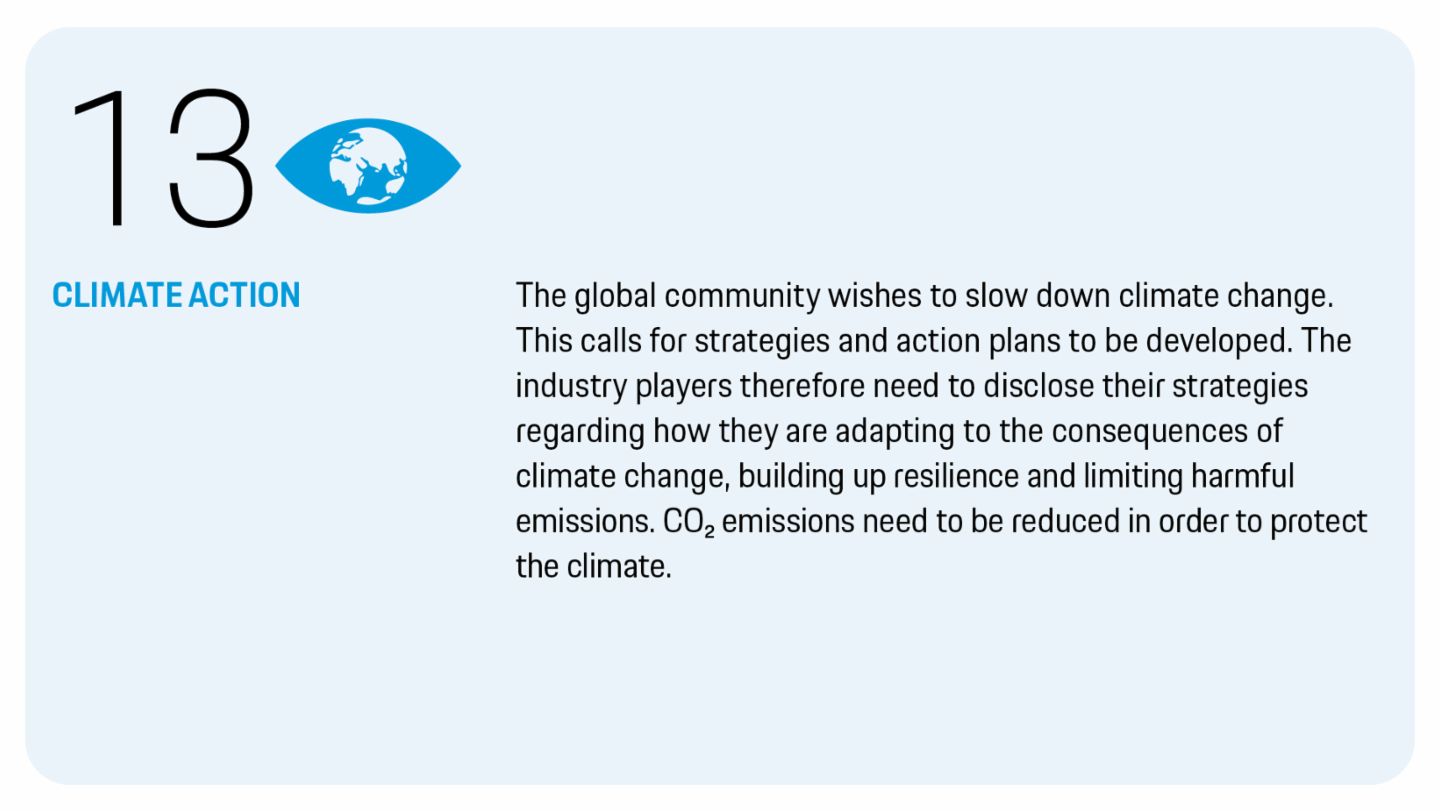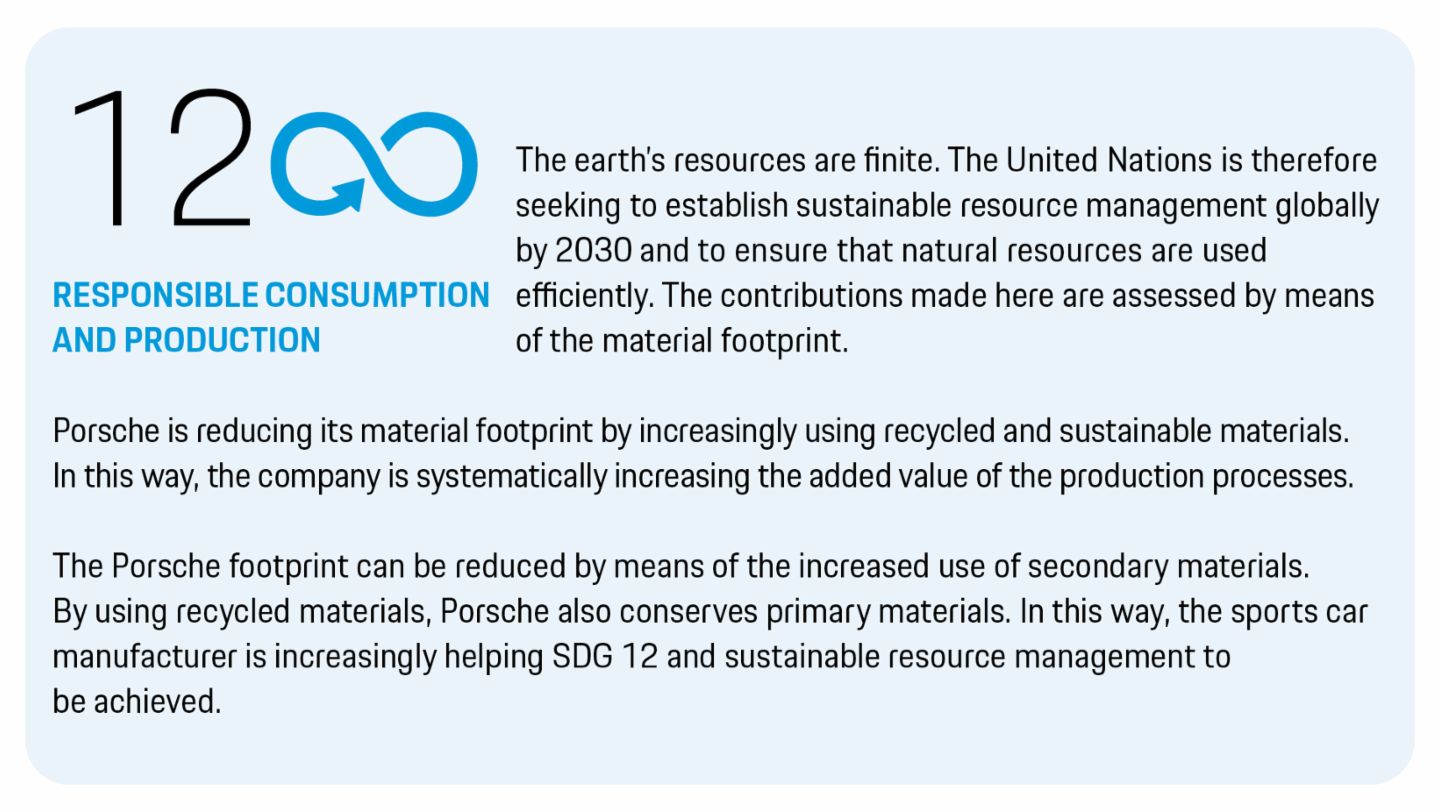Porsche has set itself the goal of closing materials cycles, with the resources used being fed back into a production process at the end of a vehicle’s service life. The company takes the environmental impacts of the materials it uses for its products into account and evaluates the materials on the basis of sustainability aspects.
There are two factors which are crucial when it comes to modern and future-proof vehicle architecture – sustainable materials and consideration of the environmental impacts. Long-lasting Porsche sports cars, quality workmanship and the use of low-wear materials are key aspects of the Porsche principle, which the company wishes to strengthen through its engagement. Porsche has set itself the goal of closing materials cycles, with the resources used being fed back into a production process at the end of a vehicle’s service life. The company takes the environmental impacts of the materials it uses for its products into account and evaluates the materials on the basis of sustainability aspects. In this way, the circular economy is further expanded. It represents a strategic priority. This aspiration is also reflected in the vision of the production of the future. Based on the guiding principle of a zero-impact factory, negative environmental impacts should be avoided in the production processes wherever possible.
Consumption of Resources and Sustainable raw materials in Vehicles
Recycled materials for a reduced material footprint.
Many of the raw materials used in auto-mobile production are finite or their extraction has a direct impact on the environment. Porsche is therefore working on using materials efficiently and reducing its primary raw material needs. The sports car manufacturer is thus making use of or developing environmentally friendly alternatives wherever possible. This is especially important to the company. Porsche therefore enshrined targets for the use of sustainable materials in all newly developed vehicle projects with electric drives in 2021.
Efficient use of resources
Organisational prerequisites were established at the strategic level and in the individual departments in order for the targets set to be systematically tracked. In an operationalisation project, responsibilities were defined, roles were assigned and target tracking systems were established. The company incorporated the vehicle and project targets set into the target system for the model lines and into the corresponding processes. All the business divisions (Procurement, Development, Production, Finance) are involved in their realisation. The relevant environmental impacts are to be incorporated even more into the vehicle development process as an important decision-making factor.
Porsche wishes to reduce the negative environmental impacts of its material use. The company is focusing on using secondary or renewable raw materials in its vehicles. Materials are additionally to be extracted and sourced in environmentally responsible ways. Porsche has therefore defined the proportion of sustainable materials at the fleet level (for example plastic recyclates and secondary source metals) as a performance indicator for new vehicle projects as of 2025. A higher proportion of sustainable materials also reduces CO₂ emissions in the supply chain, thereby contributing to decarbonisation.
In addition to these approaches, Porsche continues to work on the topic of lightweight construction. Vehicle weight is to be reduced on the basis of reduced material use, thus also reducing energy consumption and emissions.
Porsche is optimising methods of recycling HV batteries together with the Volkswagen Group and development partners, enabling even more raw materials to be recycled. And in a pilot project, used traction batteries are being examined as part of a second-life concept. If they are no longer suitable for use in a vehicle, they can be used as stationary energy storage units instead.
Porsche founded the Cellforce Group for this together with Customcells GmbH. This is putting advanced approaches to the test. The cell production waste is recycled by the partner company BASF and turned directly into cathode active material.
On the road, electric vehicles help save the environment and improve air quality in built-up areas. Given the raw materials and production processes involved, the environmental impacts of electric vehicles occur primarily during the manufacturing process. These can, however, be further reduced in the future. Porsche is continuously improving battery production together with its suppliers, for example by using electricity from renewable energy sources in the upstream supply chain and in battery cell production. In this way, the use of raw materials in traction batteries can be further reduced, the batteries’ energy density and power intensity can be increased and targeted use can be made of the raw material sources while having a reduced environmental impact. Concepts allowing modular repairs, should any be required in the traction battery, can also help conserve resources.
Sustainable raw materials
The concept of the circular economy is firmly embedded as an area of action in the company’s sustainability strategy as it seeks to make more efficient use of resources. Targets for and reporting on vehicle projects has been established within strategy development. In addition, the circular economy has been expanded and optimised at the Porsche sites and reuse and recycling concepts for high-voltage batteries have been developed. All the business divisions are involved in regular dialogue.
Porsche is already increasingly taking environmental aspects into account in its advance development. For example, research is being carried out into the use of sustainable raw materials and recycled materials for interior upholstery and support components or when awarding projects.
Consumption of Resources and Recycling in Production
With its Strategy 2030, Porsche is pursuing the vision of a zero-impact factory.
Natural resources are finite. But humankind is consuming significantly more resources than the earth is able to produce. Industrial enterprises undertake to do business more sustainably and reduce their raw material consumption. In this regard, Porsche is pursuing the vision of a zero-impact factory, in other words production that has no negative impact on the environment. The company has also made a commitment to the 1.5-degree target of the Paris Agreement.
Vision: environmentally neutral production
Porsche is striving to achieve environmentally neutral production. With its Strategy 2030, the sports car manufacturer is on its way to achieving its goal of a zero-impact factory. This target vision is based on 11 specific areas of action including resource, material and energy efficiency, and efficient water usage. Other categories include technology and processes as well as logistics, which likewise influence the company’s consumption of resources.
Since 2014, the company has reduced the water consumption per vehicle of its own production activities by more than 16 per cent.
Porsche is systematically working on achieving the targets set as part of its strategy. Important elements here are the reduction targets regarding energy, CO₂, waste, water and VOC per vehicle, which are to be reduced by 45 per cent between 2014 and 2025. Using water as efficiently as possible on the basis of circulation systems and multiple reuse and the careful handling of contaminated production wastewater are important aspects in this regard. Avoiding waste, harnessing low-waste technologies and deploying sustainable disposal solutions are key elements of Porsche’s waste management concept. The company’s Environmental protection resource regulation serves as an internal guideline and is also binding on suppliers.
Porsche has established an audited environmental management system which is certified throughout the company in accordance with the ISO 14001 environmental standard and, at the Stuttgart-Zuffenhausen site, in accordance with EMAS. In addition, energy management systems in accordance with ISO 50001 have been implemented at the Stuttgart-Zuffenhausen, Weissach, Leipzig, Sachsenheim and Schwarzenberg sites. Employee participation in these efforts is essential. The employees’ awareness regarding this topic is raised by means of various activities such as online training. More than 300 individual measures have been implemented since 2015.
Resource efficiency
In addition to reducing costs, responsible use of natural resources has a positive effect on the environment. Porsche therefore continuously optimises its processes. For example, the company modified the technical work-flows at its paint shop, thereby further redu-cing the use of chemicals in body pretreatment and the consumption of water in its wastewater treatment. Porsche also reduced the use of structural adhesives in assembly and the body shop by shortening the set-up times, which also reduced the volume of waste. Information technology was used to identify and exploit potential for the needs-based shutdown of drives and ventilation systems. This saves more than 400,000 kWh of electricity at the Stuttgart-Zuffenhausen site a year.
Waste management
Porsche’s waste management system is based on a closed-loop system. Waste is to be avoided at the zero-impact factory and materials are to be increasingly recycled, thereby conserving natural resources.
Porsche will continue to systematically collect waste which cannot be avoided separately. Wherever waste is produced, there are bins which are labelled according to the different types of waste. The valuable materials in the waste can then be used in the subsequent waste disposal process. In addition, when looking to award waste contracts, Porsche gives preference to disposal facilities that offer a materials recycling process. This is continuously monitored by Porsche’s waste management officers, with improvement potential being identified and tracked.
The levels of waste can be tracked by means of digital waste logging. This helps with the tracking of target achievement and compliance with the statutory documentation obligations.
Water and effluents
Water is becoming increasingly scarce as a resource. Porsche therefore uses it prudently. It aims to reduce water consumption and the production of effluents, thereby lessening the environmental impact of drinking water and groundwater shortages. Since 2014, the company has reduced the water consumption per vehicle produced in its own production activities by more than 16 per cent. None of the Porsche sites are located in water stress areas.
Porsche’s process facilities such as vehicle leak testing equipment, washing equipment and parts washing equipment operate largely in a closed-loop system. The paint shops conserve water by using cascade rinsing to recycle water, while bath treatment helps to extend life in pretreatment and in dip coating. The wastewater generated in production is pretreated in approved systems in order to remove or reduce pollutants. The effluents are regularly analysed and monitored in accordance with the requirements of the authorities. Porsche has installed water-saving fittings in its bathrooms.
All the water pollutants of all hazard classes produced at Porsche are transported, filled into containers, stored or reused on site. The company has reduced the risk of production interruptions when handling water-polluting substances by raising awareness among the employees, fitting technical protective devices to the production systems and installing binding agent stations at outdoor locations.
Green Logistics strategy
Throughout the value chain, the company’s logistics operations use the available CO₂ reduction potential, thereby making an active contribution to the Paris Agreement as well as combating global warming. Sustainability is therefore a top priority for Porsche’s logistics operations. The sports car manufacturer identified numerous measures and potential options as part of the Green Logistics strategy and then implemented them.
Various sustainable drive technologies were in use in Porsche’s logistics transportation in the year under review including natural gas HGVs, one hybrid HGV and one all-electric HGV. The range of LNG HGVs is 600 to 800 kilometres, so they can therefore be used for long-range trips.
Eurotrailers are used at the Stuttgart-Zuffenhausen site, thus eliminating more than 3,500 trips each year and therefore around 10 per cent of CO₂ emissions. Porsche uses LHVs for deliveries of materials (inbound logistics) and for finished vehicle transportation (outbound logistics). These can hold eight vehicles rather than the usual average of six or seven, irrespective of how they are loaded. This allows up to 2,000 HGV trips to be eliminated a year. The finished vehicles are transported from the loading stations in Kornwestheim and Leipzig to the ports of Emden and Bremerhaven. All of this rail transportation has used renewable green electricity since 2018.
The use of Eurotrailers at the Stuttgart-Zuffenhausen site eliminates more than 3,500 trips each year and therefore around 10 per cent of CO₂ emissions.
The Volkswagen Group is one of the first automobile manufacturers in the world to use low-emission LNG vessels to ship finished vehicles, on its route from Emden to North America. This achieves substantial reductions in emissions compared with traditional methods – up to 25 per cent for CO₂, up to 30 per cent for nitrogen oxides, up to 60 per cent for particulates and up to 100 per cent for sulphur oxides. There are currently two ships being used to transport Group vehicles. These can carry up to 4,800 vehicles.
Protection of Biodiversity

The biodiversity index rating for the Stuttgart- Zuffenhausen site is currently at 44 per cent. The aim is for all the sites to achieve 100 per cent by 2030.
As part of the ecosystem, biodiversity is vital for human life. Protecting biodiversity therefore goes much further than mere nature conservation. It is one of the greatest global tasks of the modern age, alongside climate change. Porsche recognises this and is actively committed to preserving biodiversity at its sites.
Evaluating and managing biodiversity
Porsche’s engagement here focuses on its sites and their immediate environment. The company’s objective is to protect the occupied and unoccupied natural landscape and to minimise its own environmental footprint. Porsche wishes to maintain biodiversity, allow nature to operate and find its own balance and secure the future capacity of nature and the landscape to recover. The company therefore pays particular attention to these aspects.
In order to better evaluate and manage biodiversity at its production sites, Porsche uses an innovative biodiversity tool developed by the Volkswagen Group. Since 2021, Porsche has been one of the first brands in the Volkswagen Group to use defined biodiversity criteria to study its Stuttgart-Zuffenhausen site.
Five areas – surface management, internal impact, external impact, local factors and external factors – are evaluated. This involves 53 parameters being logged per site in 25 clusters. For example, the biodiversity rating in the area of surface management can be improved among other things by expanding flowered areas and by increasing the number of species in the flowered areas. A site’s biodiversity index is calculated as somewhere between 0 and 100 per cent. Porsche’s Stuttgart-Zuffenhausen site is currently at 44 per cent, meaning the target for the year was achieved. As part of the zero-impact factory concept, Porsche will seek to get all of its sites to 100 per cent by 2030. In the future, the company will increase its use of environmental principles and near-natural concepts. On the one hand, Porsche will take into account the environmental aspect and the contribution made to biodiversity. On the other hand, the maintenance work required has a role to play too. For example, highly diverse wild flower meadows are cut just one to three times a year and therefore require significantly less maintenance than grass lawns. Other advantages of near-natural company grounds include the employees’ improved well-being. This is achieved on the basis of an attractive work environment and higher building certification ratings awarded by the German Sustainable Building Council (DGNB).
Zuffenhausen near-natural company grounds
In summer 2021, an area of 2,000 square metres was turned into recreational space for the employees and the neighbourhood as part of the project Naturnahes Firmengelände. The cultivated pastures and native plants also serve as a habitat for insects.
Sustainable concept for protection of honey bees
Germany’s bee population is considered to be at risk. More than half of the 560 native types of bee are in danger of dying out and more than 50 per cent of the wild bee types are on the Red List of Threatened Species (as at 2015). In Baden-Württemberg, it is 45 per cent of the 481 types of wild bee found there. However, wild bees are indispensable in the ecosystem as the primary pollinators of many wild herbs and crops. Many species are very constrained to specific flowering plants as their source of pollen and nectar, and require special nesting places. With their pollination function, wild bees have a significant influence on the ecosystem and are therefore classified as a keystone species. The loss of such species can have serious consequences for the entire ecosystem.
The Stuttgart-Zuffenhausen site is home to 13 bee colonies, each with around 50,000 bees.
To conserve nature and species at the Stuttgart-Zuffenhausen site, the company therefore introduced 13 bee colonies, each with some 50,000 bees, to a meadow orchard located within the grounds in 2020. Porsche introduced a further five colonies there in the year under review. In addition, another bee site was established in Zuffenhausen. There are now 10 new bee colonies established at the edge of the woods between the central workshops and the former Bosch grounds. In spite of the tricky weather conditions, the company harvested the site’s first forest honey in the year under review.
The main plant in Stuttgart-Zuffenhausen is the second company site to get its own bee colonies – since 2017, some three million honey bees have occupied the off-road site at the Leipzig plant which has been returned to nature. The lives of the honey bees are also the topic of the Porsche Safari environmental education programme, which is organised in cooperation with Auwaldstation Leipzig. Between March and October, children, school classes and families can take a tour of the Porsche Leipzig off-road site and discover everything there is to know about its flora and fauna.
Porsche Leipzig’s grazing concept is unique in the automotive industry. In addition to honey bees, the sports car manufacturer also introduced Exmoor ponies and wild oxen to the off-road site in 2002. The 132-hectare natural space is also home to Finnsheep and numerous wild animals.
The company is also committed to protecting biodiversity around the Porsche Development Centre in Weissach. A guide was developed to this end together with experts in the fields of landscape planning and species conservation. This gives concrete recommendations for future planting and the creation of green spaces. The aim of the transformations is to create a wildlife corridor leading to the local natural structures and species outside the development centre. Special attention was paid here to especially protected species of wild bee. To improve their conditions of existence, wild bee pastures were created in the green spaces along specific park areas and the southern approach road. Other measures in the project Naturnahes Firmengelände are in the pipeline. In this way, biodiversity and habitat variety will continue to be promoted at the Weissach site.





